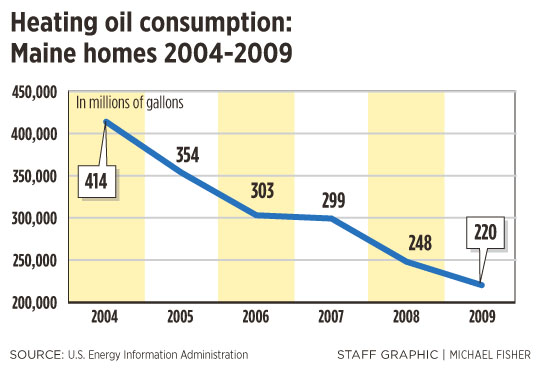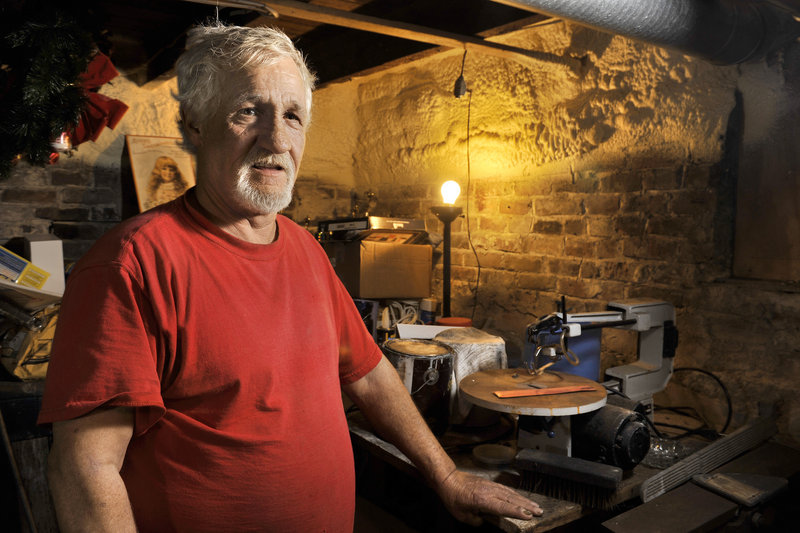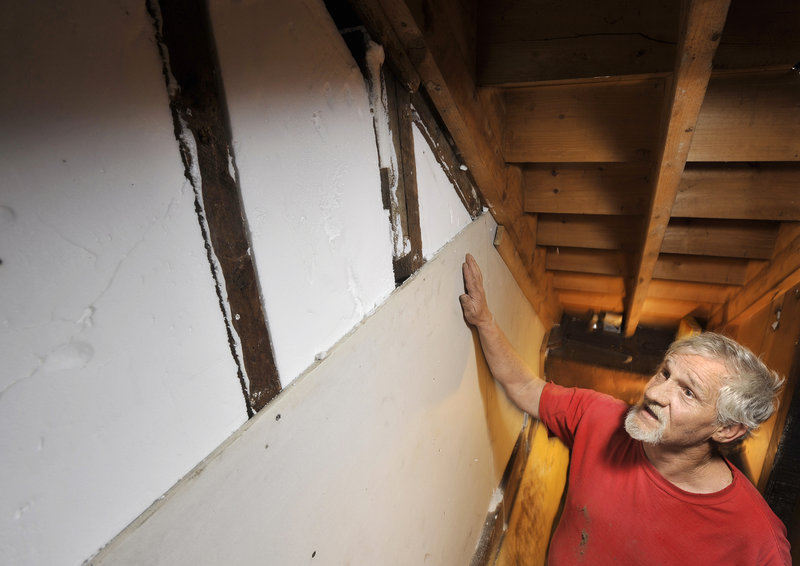This story was updated at 11:35 a.m. Nov. 14 to clarify how work done through Efficiency Maine’s home energy savings program was paid for.
Maine residents slashed their heating oil use by 45 percent between 2004 and 2009, a dramatic reduction that’s highlighting the combined power of rising prices, stepped-up weatherization and new heating technologies.
Maine households cut heating oil use by a higher percentage than any New England state, figures from the U.S. Energy Information Administration show.
Maine remains more dependent on heating oil than any other state in the nation, causing a drain on the economy and on household budgets during a period of record-high prices. The number of Maine homes warmed primarily with oil still hovers in the 70 percent range, according to the latest U.S. Census data, down from 80 percent in 2000.
But this statistical dependence belies just how much the state has weaned itself from oil heat in recent years.
It’s an accomplishment that the director of Maine’s energy office says isn’t widely recognized, but is very significant. Just because a household retains an oil furnace as a central heating system, he said, doesn’t necessarily mean the unit is running all the time.
“The thing that counts is how much oil they’re using,” said Ken Fletcher. “That’s the bottom line.”
Several factors are at play in keeping oil furnaces from switching on as frequently, Fletcher and others say.
• Fuel switching: Roughly one in 10 Maine homes heat primarily with cord wood or wood pellets, increasingly with a new generation of cleaner-burning stoves and boilers. More homeowners also are converting to propane and, where it’s available, natural gas.
• Insulation: Whole-house weatherization that includes air sealing and heavy insulation can cut heat use by 40 percent. Even lesser measures add up.
• Efficient burners: Modern oil boilers can consume 10 to 40 percent fewer gallons than older models. That helps households that stay with oil.
• Economy: The recession and ongoing job slump have households cutting back on many fronts. That includes lowering the thermostat and closing off rooms.
These and other reactions are driven primarily by fuel oil prices, which have been volatile in recent years. The federal EIA is projecting record-high average prices this winter, up 10 percent from last year. Maine’s statewide average last week was $3.59 a gallon, reflecting a steady rise since the start of the heating season began.
The reaction to rising prices is being seen across New England and is reflected in regional statistics in the EIA data.
Total heating-oil consumption in the six states fell 26 percent, from 4.5 billion gallons in 2004, to 3.4 billion gallons in 2009, the most recent year available. Households led the trend, with consumption down 34 percent during the period.
On a state-by-state basis, Maine cut oil use the most, by 45 percent. It was followed by New Hampshire, 39 percent; Connecticut, 29 percent; Massachusetts, 28 percent; Vermont, 27 percent and Rhode Island, 25 percent.
Behind the drop are thousands of individual decisions.
A decade ago, the typical Maine home burned 1,000 gallons a year. The trade group representing oil dealers estimates average consumption is down to 850 gallons today, but the latest figures suggest that number may be too high.
“Dealers know their average has gone down,” said Jamie Py, executive director of the Maine Energy Marketers Association.
Oil dealers are reacting to the shift. Many sell propane; others are diversifying into wood pellets and solar panels. They all encourage conservation and efficiency, he said, as a way to retain customers.
Mark Mowatt’s house is one example of how individual actions cut consumption.
Located in Portland, Mowatt’s 90-year-old home was so leaky he could feel a breeze blowing inside with the doors and windows shut. A year ago, he signed up for a whole-house weatherization program administered by Efficiency Maine.
Following a professional energy audit, Mowatt had the walls and attic insulated, the rim joist sealed and a new furnace installed.
The project cost $10,000, but oil consumption dropped in half last winter, to less than 400 gallons. Comfort is an added bonus.
“Otherwise,” Mowatt said, “we’d still be sitting here with jackets on in the fall, trying to stay warm.”
But officials know it is more challenging to accomplish further, deep reductions across Maine’s housing stock.
The federal EIA winter heating forecast is projecting that consumption in the Northeast will fall by 1 percent, based simply on rising prices.
Fletcher of the state energy office believes it’s possible for Maine to do more, and trim overall heating oil consumption by 5 percent a year.
“The technology is there and people are motivated,” he said.
Some of that motivation could be tempered, though, by the expiration of government incentives that helped pay for upgrades like those done at Mowatt’s house.
Rebates are used up for Efficiency Maine’s home energy savings program, but the effort reached 3,200 households. The work on average cost $8,800 per home, with two-thirds paid by the homeowner and one-third by government incentives. The work cut energy use by 40 percent, on average.
The agency now is encouraging residents to pursue so-called PACE loans, which are tied to the upgraded property.
Despite rising oil prices, many Mainers still live in old homes with few energy improvements, according to Dana Fischer, residential program manager at Efficiency Maine.
“We have barely scratched the surface,” he said. “There are thousands of homes out there with no insulation at all.”
Staff Writer Tux Turkel can be contacted at 791-6462 or at: tturkel@pressherald.com
Send questions/comments to the editors.






Success. Please wait for the page to reload. If the page does not reload within 5 seconds, please refresh the page.
Enter your email and password to access comments.
Hi, to comment on stories you must . This profile is in addition to your subscription and website login.
Already have a commenting profile? .
Invalid username/password.
Please check your email to confirm and complete your registration.
Only subscribers are eligible to post comments. Please subscribe or login first for digital access. Here’s why.
Use the form below to reset your password. When you've submitted your account email, we will send an email with a reset code.